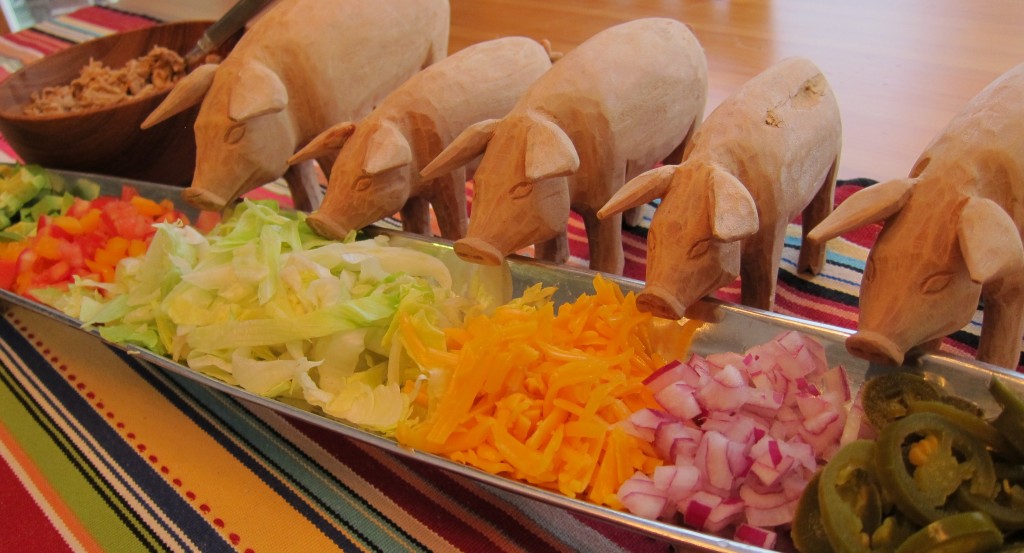This month marks my 9-year anniversary at my law firm. Wow.
My first week on the job my boss asked me to finalize an appellate brief for filing, which required preparing a table of contents and index of authorities. “You know how to do that, right?” he asked. Of course I knew how to do that. Sort of. I mean, I could prepare the table of contents in chronological order, and prepare the index of authorities in alphabetical order (I did go to elementary school, after all). But I had no clue how to do the dot dot dot thing, which looks like this:
The staff at the time (and I use the term “staff” loosely) were unhelpful, if not openly hostile. The attorney sitting next door to me advised me that my life at the firm would be much better if I just learned how to do things myself. Yikes. (He was right.) So I copied the dot dot dot thing from a brief my secretary at my prior job had prepared for me, and inserted it into the brief I was working on. To this day, that is still how I do the dot dot dot thing — I just cut and paste from a prior brief.
And so every appellate brief I have written for the past 9 years has a little dot dot dot DNA from my old firm. Kind of like sourdough starter.
Speaking of sourdough starter, were you one of the people that embraced bread baking as a pandemic hobby? I am not. My pandemic hobby was making vanilla extract, which became popular when the price of vanilla extract skyrocketed. I discovered a co-op on Facebook that sells beautiful beans from various locations around the world for roughly $9-$10 per ounce (which is about 8 or 9 beans).
My first order of 4 ounces of Madagascar beans
Put the beans in alcohol — vodka is my booze of choice — and let them sit in a cool dark place for about a year or so (kind of like they did to me at my last job). 1 ounce of beans to 1 cup of alcohol for single fold, 2 ounces to 1 cup for double fold. It’s easy to get carried away when the co-op offers beans from different countries, and there’s a fair amount of FOMO associated with the whole thing.
When the beans arrive, the first I thing I learned to do is inspect each one for “tattoos” — the pinpoint marks growers make on them to identify the beans in case of theft. I can’t describe how exciting it is to find a tattoo! It’s like a little love note from the grower.
Tattoo marks on unripe beans
Tattoos!
So what to do with my now lifetime supply of vanilla extract in the making? Baking, obviously. And vanilla sugar and vanilla salt. And Vanilla Bean Cranberry Sauce, which is a favorite at the annual senior Thanksgiving luncheon hosted by my son’s former Boy Scout Troop — there’s never a drop left. In the past, I’ve made it with sad, dry, shriveled up beans that come in a glass tube, but this year I’m making it with my gorgeous, plump, vodka-soaked beans — and it is good! For a beautiful, delicious punch of color on your Thanksgiving plate, this cranberry sauce is a winner dot dot dot.
- 1 vanilla bean
- 1 cup sugar
- ½ cup water
- ½ cup orange juice
- 12-ounce package fresh cranberries, rinsed and drained
- With a sharp paring knife, split vanilla bean vertically. Scrape out seeds (also known as caviar) and set aside.
- Combine vanilla bean, sugar, water, and juice in a medium saucepan. Bring to a boil over high heat. Add cranberries and vanilla bean seeds. Reduce heat and gently simmer for 10 minutes, stirring occasionally. Remove from heat. With the back of a spoon, smash some of the cranberries against the side of the pot. Cover and cool completely at room temperature. Discard vanilla bean and refrigerate until ready to serve.

Use the plumpest, reddest, firmest cranberries you can find
Simmering in their vanilla bath
This is no ordinary cranberry sauce!
Bonus joke: Why did the cranberry sauce cross the road? To get to the other sides.






